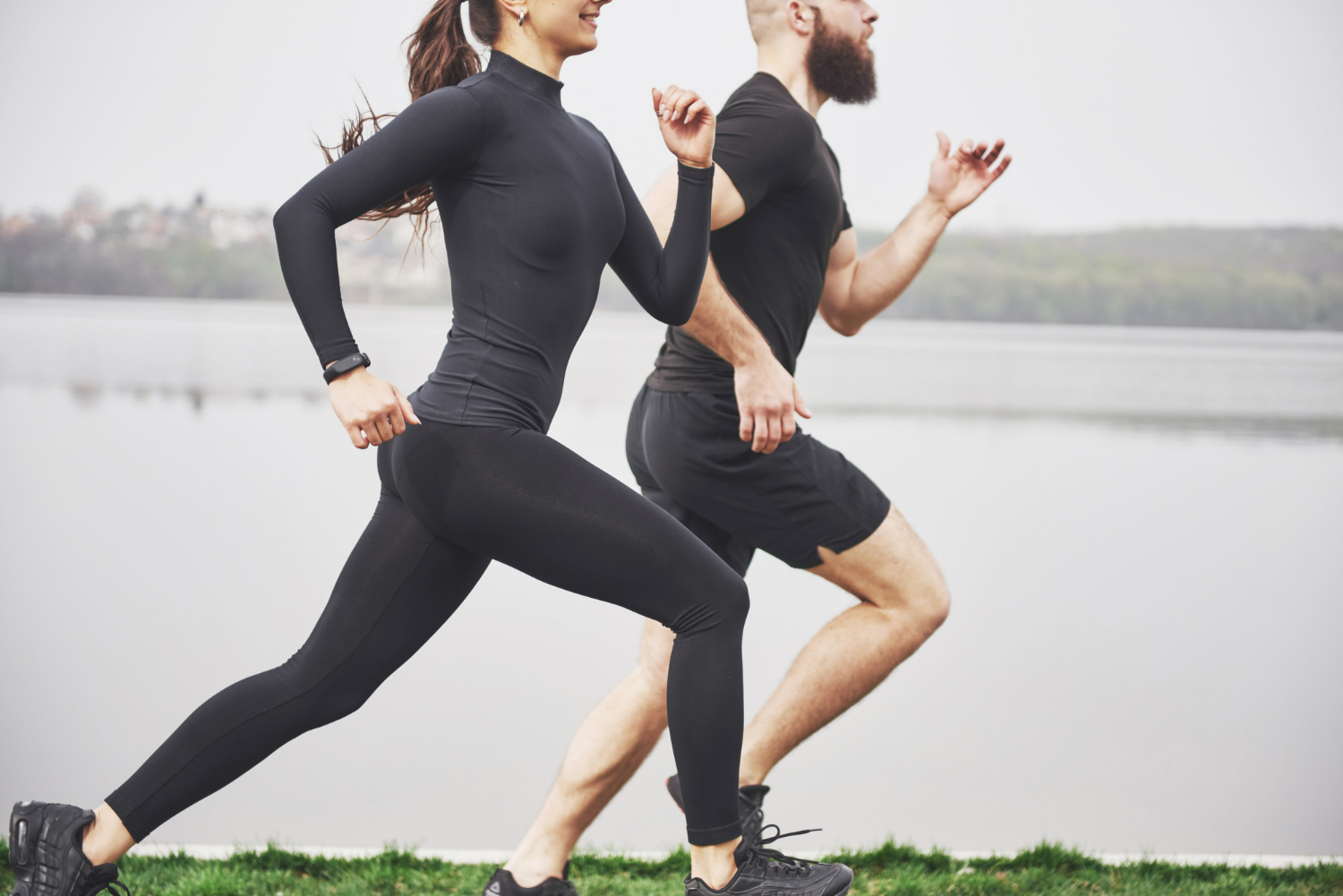Necessary Equipment for Triathlons
If you’re looking for a new challenge – and want to get seriously fit – a triathlon is often seen as the ultimate sporting adventure. Featuring three different sections, involving swimming, running, and cycling, it’s a great sport for keeping active as well as maintaining a varied and interesting training regime.
However, with so many different elements, there’s no doubt triathlon is a gear-heavy occupation. So if you’re up to the challenge, what essential equipment do you need to get started? At The Edge Sports, we’re here to help you sort the must-haves from the maybes; the pro gear from the poser gear. Here’s our guide to the equipment you need to get started in triathlon.
What is a Triathlon?
The key to triathlon is endurance. Facing multiple challenges, each participant must complete a swim, followed by a cycle, followed by a run. There are five main categories of triathlon:
- Super Sprint
- Sprint
- Standard / Olympic
- Half Ironman Marathon
- Full Ironman Marathon
Each of these races features different lengths of swim, cycle, and run, but the activities are traditionally completed in that same set order each time.
Transition
In addition to the activities of a triathlon, there is a section known as “transition”. This is often referred to as the fourth discipline of triathlon, as, for those at the top of the sport, it features its own set of challenges. It simply involves transitioning from one sport to another, but it’s where your gear plays a key role. You’ll be moving from a swim-to-bike kit, and then from the bike-to-run kit. You’ll be given a race number which you’ll need to wear on the bike and run, and sometimes a timing chip to time you from start to finish. Your helmet must be fastened before you move your bike and cannot be removed until the bike is racked again. Speed and organization are key.
Great For The Swim
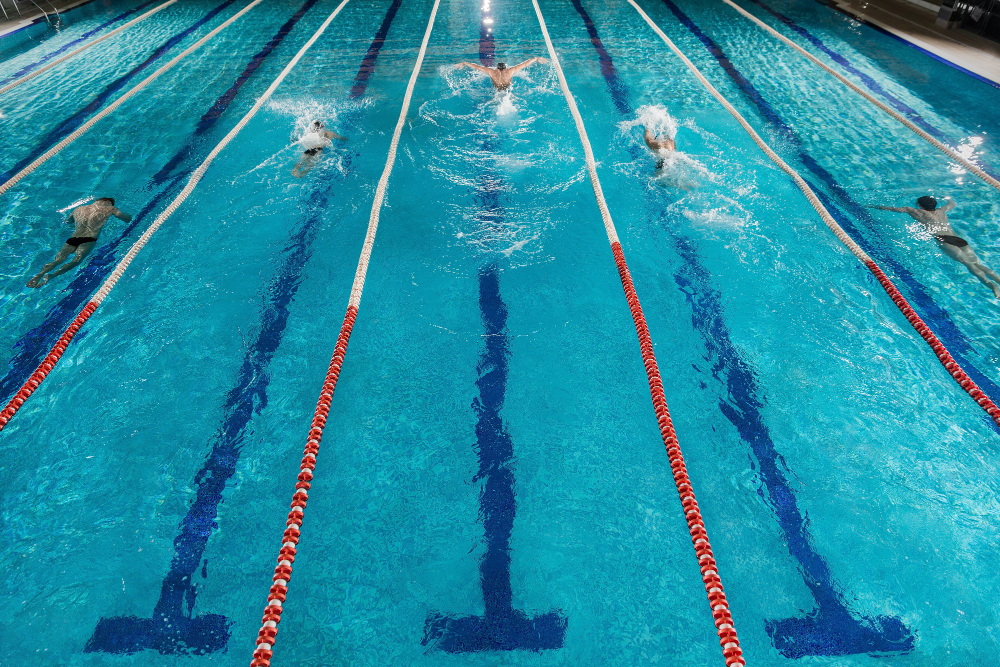
Pool Swimming
Types of triathlon swims vary. A pool swim is probably the most straightforward option here, as temperatures remain regulated, meaning there is a little less necessary gear. The essentials are:
A tri-suit. This is an item really worth considering if you are going to do a triathlon. Specially built to be suitable for each of the three events, a tri-suit can be worn throughout, meaning you don’t have to get completely naked in the public transition area following your swim! However, it’s important to do your research and get the right tri-suit for you. A close-fitting tri-suit will reduce drag compared to other swimwear, which might help your time. It will also be designed to dry very fast, be padded in the seat to give greater comfort during your cycle and be anti-chafing, which is important for your run.
If you are comfortable with publicly changing (and also comfortable with the time this will add), you could opt for less specialist swimwear. Some kind of swimwear is clearly essential!
Goggles. The style here is down to personal preference, but you do need to make sure your Goggles fit closely and don’t steam up.
Swimcap. Often these are given out by race organisers to help identify different competitors, but you will still need your own swim cap that you know you are comfortable and experienced wearing.
Nose-plugs / ear clips. Although not strictly essential, you’ll find out during your training how much you personally need them. Many find the chlorine levels of pool swimming too intense to cope with without a little extra protection.
Open Water Swimming
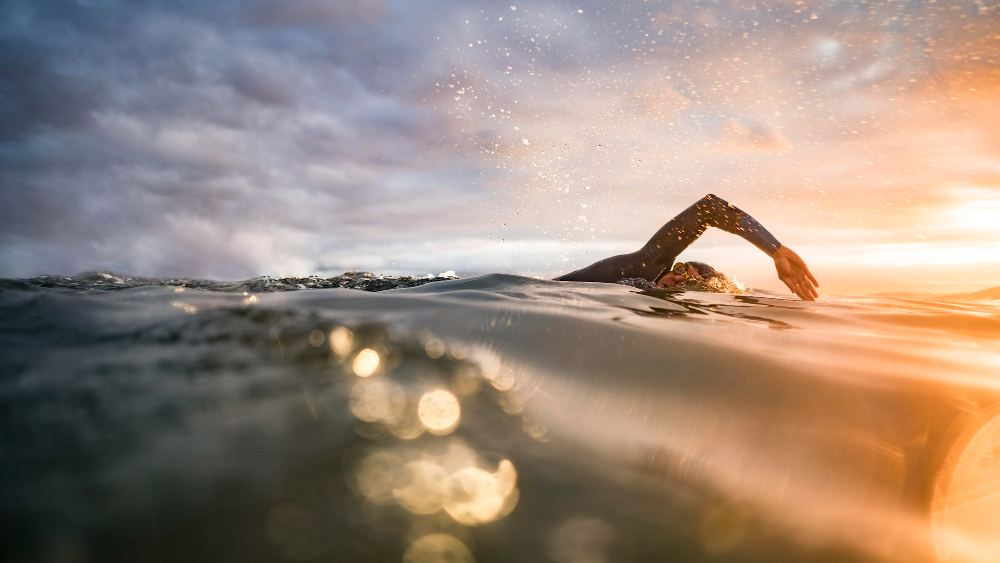
As triathlon becomes more testing, open water swimming might well feature in the swim section of the race. This may require some different strategies, from training approaches, too – you guessed it – more equipment! Read more on mistakes beginner Triathletes make when swimming.
Wetsuit. If your race includes some open water swimming, they might specify the equipment allowed, particularly whether the swim is wetsuit-mandatory, optional, or non-wetsuit. Season and location will play a big part in the decision. If you do need a wetsuit, the most important factor for triathlon success is a good fit. Close fitting but with the right measure of buoyancy – something which varies between wetsuit styles and will come down to personal preference. Read more on how to choose the right wetsuit for a Triathlon.
Goggles. Your goggle requirements might become more specific for an open water swim. Tinted lenses might be a good idea to reduce glare, while light-enhancing lenses can really help your vision on a dull day.
Gear For The Cycle
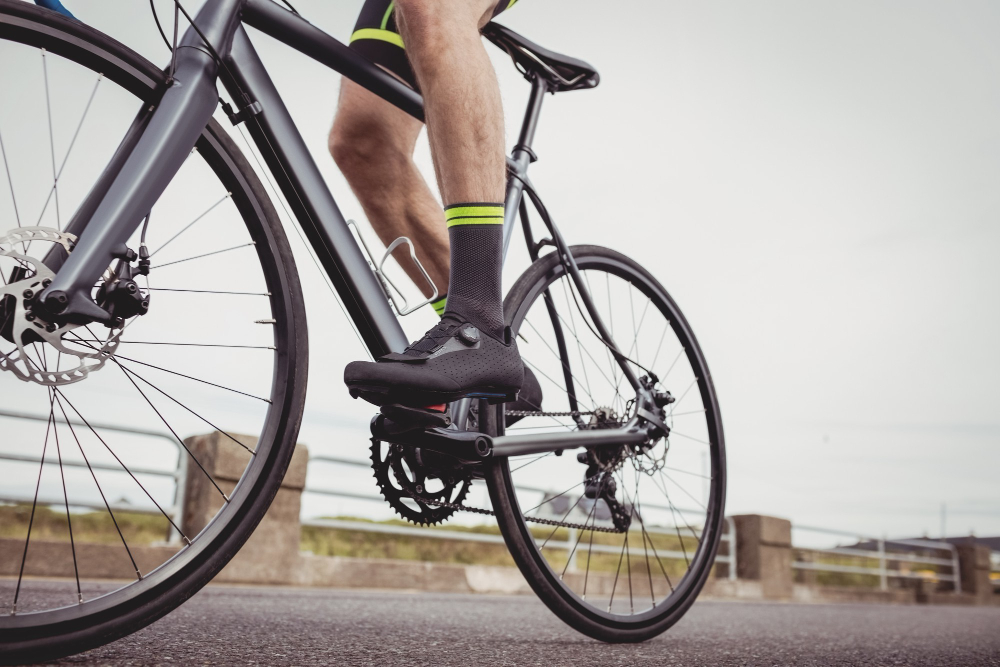
A bike. An expensive, but non-negotiable piece of triathlon kit! With speed being the key factor, you’ll probably be hoping to compete on a road or specialist racing bike, a time-trial bike, or a beautiful featherlight carbon-framed speedster. However, it’s unlikely the race organisers will specify what you have to use – their only concern will be safety, so you need to ensure that your bike is road-worthy and poses no risks. Good brakes, easily operating gears, no sharp edges, tyres with the proper amount of air in them, and a generally well-maintained machine are what you need.
A helmet. Here safety is once again the essential key – you need a cycling helmet that has no marks, abrasions or scratches, no damage to the surface, and a safety strap that fits well to your chin. Once again, this will be checked as part of the health and safety provisions of the race.
A race belt. This is simply a way to display your race number on your bike. Attaching it can take up precious time in transition, so it’s worth giving some thought to it. A race belt is a piece of elastic that makes attaching your signage that much easier.
Something to wear. Once again here we’d vote for the tri-suit. If you’re doing a long-distance race, a two-piece tri-suit is a good idea, as it makes toilet stops simpler. However, there are no rules about what you must wear for the cycling leg of a triathlon. But don’t wear anything that will flap and cause drag or potentially get caught in your bike! Cycling shorts are a good option because of the extra padding around the seating area – although remember that a tri-suit comes with this built-in too.
Weather gear. If it’s likely to rain or be cold, it’s worth planning some layers to make the bike leg more comfortable. While it might seem like you’re adding time in transition, if you are doing a long cycle and the weather is against you, it can feel pretty miserable, and also affect your time. Having the right clothing for the weather is important, so consider high-performance breathable pieces that have taped seams to keep out wind and water.
Sunglasses. It might not seem like the right time for a style statement, but sunglasses are an essential practical item for keeping wind and insects out of your face, as well as helping you see in the sun!
Bike shoes or trainers. Of course, you need something to wear on your feet for cycling. Most experienced triathletes will wear clip-in bike shoes, but these do take some getting used to. So if it’s your first triathlon we wouldn’t say these are essential – you’ll be fine in trainers. But do make sure they fit well and are as comfortable as possible.
Emergency bike repair kit. We all hope it doesn’t happen, but you do need to be prepared for the worst!
Gear For The Run
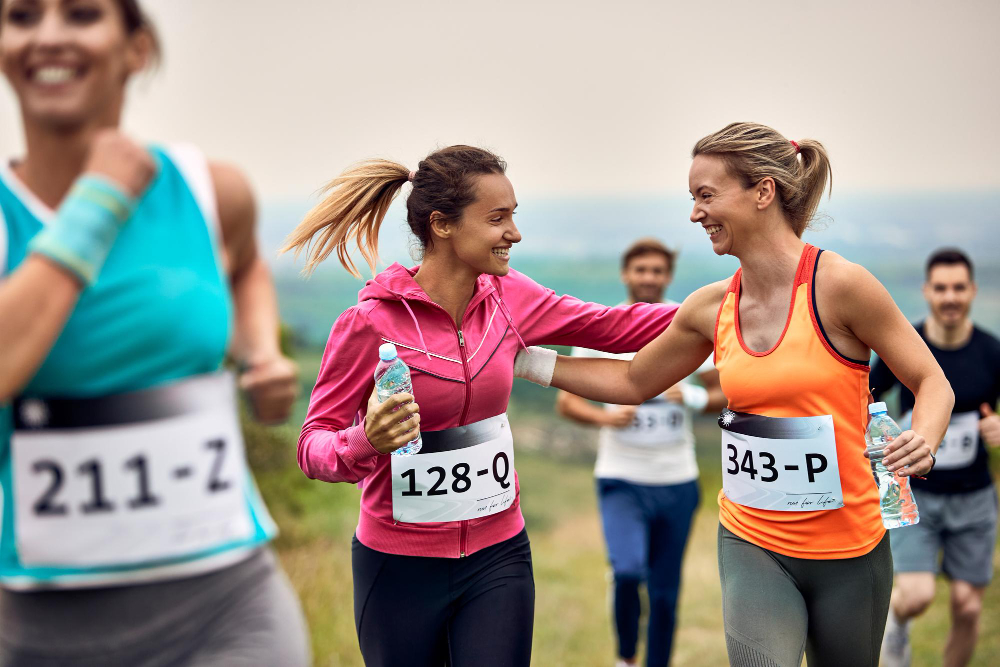
Running shoes. Clearly, these are essential. If you haven’t been using clip-in trainers for the cycle, you could speed up your transition by staying in the same shoes – however, if you’re using them for the run you’ll want to consider if they are light enough and supportive enough to help you to your best time.
Elastic laces. A top tip from the best triathletes – elastic laces can save you precious seconds during transition if you are changing shoes.
Running wear. Chances are running is the most accessible of the three disciplines for you to train for. You’ll know what you are most comfortable running in, and how to prepare for the elements. However, it’s worth planning to see if you can minimize the change you need to do in transition – once again, a tri-suit comes into its own, providing you with an aerodynamic fast-drying option that wicks sweat away from the skin and keeps you performing at your best.
Are you looking for the very best in essential triathlon gear?
At The Edge Sports, we specialize in helping athletes realise their potential. Whether you are just starting training or you are a regular Ironman competitor, we can provide top-quality gear to give you the edge you need. From best-brand trainers to all-weather running supplies, cycling shorts to swimming goggles, here at The Edge Sports we kit out winners.

